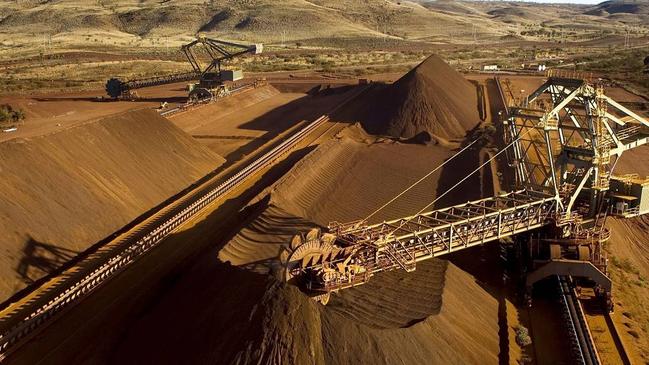Rio Tinto may boost spend on iron ore operations
Rio Tinto concedes it may have to spend up to an extra $2.2bn to restore iron ore operations to full glory.

Rio Tinto has conceded it may have to spend up to an extra $2.2bn to restore its flagship iron ore operations to their full glory, unveiling plans to drastically increase spending at the division in an investor presentation on Thursday night.
Rio iron ore boss Chris Salisbury told reporters his division would meet its 2019 production and cost guidance, of 320-330 million tonnes and $US14-15 per tonne, saying the $US80m ($116m) short-term fix for problems at its Brockman operations that hit the company’s output and product quality this year was progressing well.
READ MORE: Big miners get serious about tackling climate change | Rio Tinto may close NZ aluminium smelter
But the lingering impact of a poor start to the year remains, and Rio’s average Pilbara unit costs for 2020 still look likely to drift above those of chief rival BHP for the first time in recent history, leading to questions about whether Rio’s post-boom cost saving rush had cut too deep and put long-term performance at risk.

While Rio said it expected to export 5 per cent more product in 2020 — suggesting shipments of 336 to 346.5 million tonnes — that still remains below the 338-350 million tonne estimate issued at the beginning of 2019.
The mining giant also lifted its estimate of the cost of maintaining its Pilbara output, flagging an annual Pilara sustaining capital costs of up to $US1.5bn from 2020 to 2022, against previous guidance of $US1bn or as much as $US1.5bn over three years.
Mr Salisbury said the revised estimate included spending on new haul trucks and mobile fleet, to reflect the fact that its mines were slowly moving further away from processing hubs as they aged.
“But we’re also spending money on the assets that are quite old, for instance our Tom Price concentrator need a structure upgrade — of course that’s been with us for 50 years,” he said,
Rio’s iron ore operations have recovered somewhat from a poor first half of the year, when the company issued successive downgrades after taking a hit from Cyclone Veronica and fires at its port operations.
But the company is shipping increased volumes of lower-grade material — 60 per cent product compared to its regular 62 per cent Pilbara blend — into the market over problems with waste ore movement at Brockman. Rio Tinto shipped 6.7 million tonnes of lower-grade products in the September quarter, a big jump in the portion of lower quality material exported.
“We had a solid performance in the third quarter. We had record total material moved in the quarter, so I think that demonstrates we have great momentum from the work that was done to recover from the operational issues,” Mr Salisbury said.
“We expected to spend $US80m this year, we’re on track for that, and we’re on track for business as usual from 2020 and beyond.”
Rio also gave firmer guidance on when it expects to be able to meet and sustain its long-term goal of exporting 360 million tonnes a year from the Pilbara, saying it will have the capacity to meet the target with its new Koodaideri mine — which should enter the market by late 2021 — is fully ramped up.
Rio shares closed on Thursday at $90.88.

